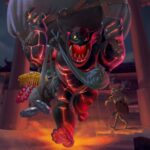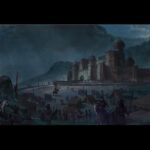
VISUAL PERSPECTIVES
Services



Preproduction is the foundational phase of visual storytelling, where ideas are translated into tangible plans to guide production. It encompasses several key steps:
Storyboarding: This involves creating a visual blueprint of the story through sequential sketches. Storyboards outline the narrative flow, shot composition, timing, and key action sequences, ensuring the team shares a unified vision.
Key Background Design (Key BG): Artists craft critical background layouts that set the tone, mood, and environment of the story. These serve as stylistic references for the overall visual language of the project.
Character Design: The process of conceptualizing and designing characters to reflect their personalities, roles, and relationships within the story. Designers focus on aesthetics, functionality, and adaptability for animation or visual consistency.
Prop Design: Props, whether functional or decorative, are essential elements of the world-building process. Designers create detailed concepts for objects that interact with characters or enhance the narrative's authenticity.
Together, these steps ensure a cohesive and visually compelling framework, streamlining production and bringing the story to life effectively.
The production phase is where the creative groundwork laid during preproduction is brought to life with precision and artistry. It includes the following key steps:
Layout: This stage translates storyboards into detailed, finalized compositions. Layout artists refine the shot’s framing, camera angles, character positions, and environment placements, ensuring clarity and visual storytelling alignment.
Background (BG) Creation: Background artists develop fully-rendered environments based on key background designs. This includes adding intricate details, textures, and depth to establish immersive settings that enhance the narrative.
Coloring: In this step, colors are applied to backgrounds and other visual elements to set the mood and tone of the scenes. Colorists work closely with the visual style established in preproduction, harmonizing palettes to evoke emotions and maintain consistency across frames.
These production tasks transform concepts into polished visuals, forming the foundation of the final animation or illustrated work.
Matte painting is a specialized aspect of production that involves creating highly detailed, photorealistic, or stylized environments that seamlessly blend with the visual narrative. It is often used for expansive landscapes, intricate cityscapes, or fantastical settings that would be time-consuming or impractical to create using traditional methods.
Key elements of matte painting include:
Design and Composition: Artists begin by designing the matte painting based on storyboards or concept art. They focus on the composition, ensuring the painted elements integrate naturally with the scene’s framing and perspective.
Rendering and Detailing: Using digital tools or traditional techniques, matte painters add intricate details, lighting, and textures to create depth and realism. This stage ensures the painted background feels immersive and cohesive with other visual elements.
Integration: Matte paintings are blended into live-action footage or animated scenes. This involves matching lighting, color grading, and perspective to maintain a seamless connection between the painting and other scene components.
Matte painting enhances storytelling by providing richly detailed, atmospheric visuals that set the stage for action and deepen the viewer’s immersion in the story world.
About us


SHIBU K
ART DIRECTOR

SIBI N DEVASIA
ASSOCIATE ART DIRECTOR

SUGEETH PADIYATH
Sr ART ASSOCIATE
Talk to us
Have any questions? We are always open to talk about your business, new projects, creative opportunities and how we can help you.



















































